
- African wild dogs work in packs to bring down almost every prey they set their sights on.
- They are vanishing from much of their range due to disease, persecution and habitat encroachment.
- Disease spreads quickly through families due to their close social lives and interactions with pups.
About the African Wild Dog
The African wild dog (Lycaon pictus) is one of the most impressive and yet least known carnivores in Africa. Once abundant – as with many species – it is now looking down the barrel of extinction thanks to a variety of issues including human persecution and disease.
Part of the Canidae family, Lycaon translates to ‘wolf-like’ from Greek: a fitting description. They share many similar characteristics with their northern counterparts, hunting ferociously in packs and sticking close to social circles. Painted wolf is a term conservation groups are attempting to use as a rebranding tool – to make saving the species more sexy.
Along with cheetahs, they are the only large diurnal carnivores on the continent. Their neighbours, the lion, are revered as ferocious hunters, yet whilst the latter are successful in around 10-20% of hunts, African wild dogs achieve around 80% efficiency.
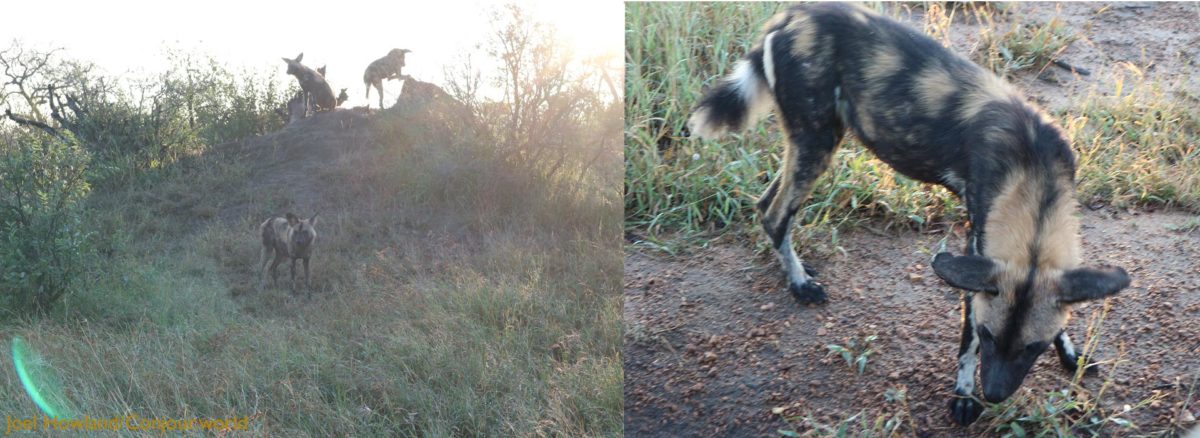
African Wild Dog – Joel Howland, 2017. All Rights Reserved
When they set their sights on prey, it rarely escapes.
Standing at 75cm shoulder-height and weighing up to 30kg, these slender animals look built to run – and that they are. Working as a pack, they’ll run sometimes for hours until their prey can no longer stand.
Sexual dimorphism in the species (with females around 3-7% smaller) doesn’t show when it comes to ranking. Females will leave the pack once sexually mature, but the head female will be the oldest in the family – often substantially older than her co-leader male counterpart.
When breeding, there is a gap of around a year or so between litters, which come with an average of 10 pups. Gestation is around 69-73 days and the pack will remain in one, chosen spot whilst denning the newborns. When not doing this, wild dogs are basically nomadic and cover areas up to 1,500 square kms.
The reason the dogs are separate from the genus Canis (often associated with ‘dogs’ like dingoes and wolves) boils down to two things: one fewer toe then most species in that genus, with their middle toepads fused together, and a different set-up in the mouth. Their dentition includes something known as the ‘trenchant heel’.
African wild dog life
Although packs of them have been spotted at high altitude, painted dogs are found predominantly across arid and savanna areas, and tend to avoid forested or heavily wooded regions. This is believed to be because of their preferred hunting method: outlasting the prey across distance.
An endearing quality of the species is their tight-knit family life, and this is particularly evident in the raising of pups. The mother will stay at home whilst others go hunting. They will then return and regurgitate food to feed the young. Sadly, this is also a problem where disease is concerned, meaning infections can spread rapidly through populations.
Adding to the family bonds is a ‘first-eat’ privilege given to pups, which ends once they are about a year old.
A mysterious species
There is still a lot that is misunderstood or unexplained when it comes to this special animal. Research is ongoing and is only becoming more important as populations decline across their range. One report from 2016 assessed how spatial variation (the spread across a population’s landscape) of surface water resources affects the wild dog’s ranging behaviour. The results were unexpected.
Based in Zimbabwe’s Hwange National Park and nearby farms, the paper studied presence-only data for five families of dogs across 1992 – a dry year with 20 points of water in the region – and 2000 – wetter with 30 points.
The probability of L. pictus ranging near water sources was higher in 2000 than in 1992.
According to the authors, the finding “reinforces the notion that surface water resources attract wild dogs in the savannahs but paradoxically less so when water resources are scarce.” This sort of surprising report is critical when it comes to understanding how these dogs move, how they choose range, and what drives their innate behaviours.
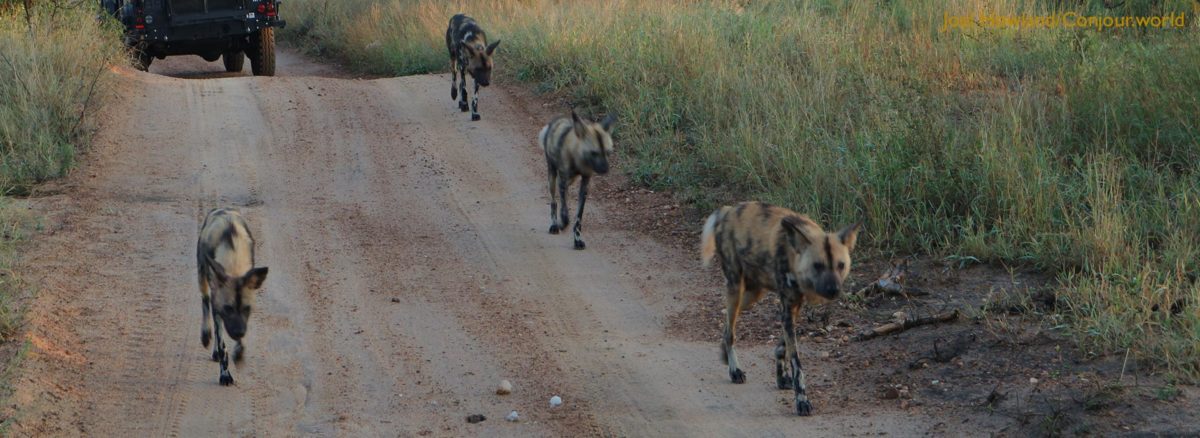
African Wild Dog – Joel Howland, 2017. All Rights Reserved.
African Wild Dog Conservation
Native to sub-Saharan Africa, wild dogs use to reside across vast areas of the continent before seeing their numbers dwindle to around 5,000 individuals. An aspect that makes conservation of the wild dog difficult is that there are five debated, but potential, subspecies of the animal, making it controversial as to how many of a particular species there actually are.
The five possible subspecies are the Cape wild dog (l. p. pictus), East African wild dog (l. p. lupinus), West African wild dog (l. p. manguensis), Chadian wild dog (l. p. sharicus) and Somali wild dog (l. p. somalicus).
This means that reports can be inconsistent, and resources spread in the wrong areas or not available at all.
One of the organisations working to save the painted wolf is the Endangered Wildlife Trust working across Limpopo/Waterberg, Lowveld/Kruger National Park Western Boundary/Northern KwaZulu Natal, and the Eastern and Northern Capes of Africa.
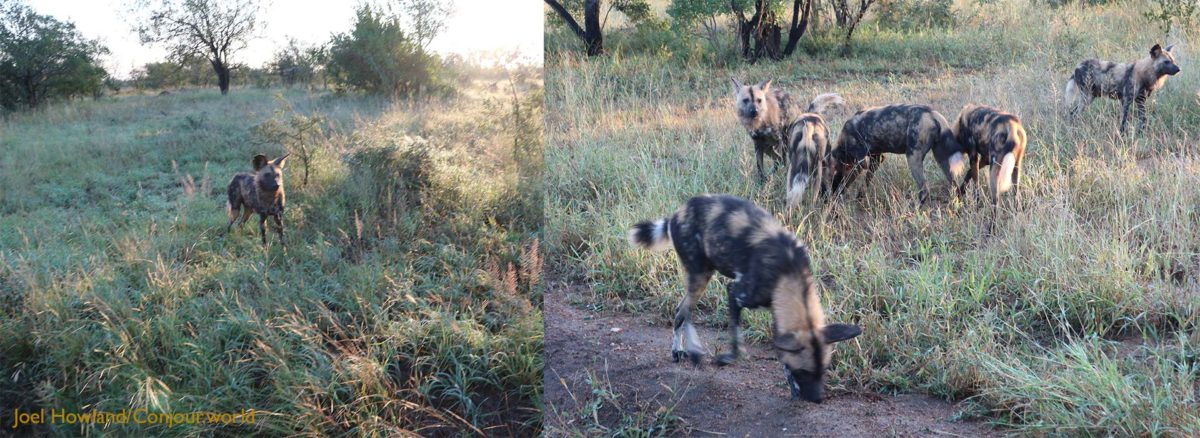
African Wild Dog – Joel Howland, 2017. All Rights Reserved.
EWT: Helping save Africa’s painted wolf
On their website, EWT explain the number of factors that must be considered when it comes to carnivore conservation – which falls under their Carnivore Conservation Program founded in 1973. As with most large animals, a major problem is habitat destruction and encroachment, and human-wildlife conflict that results. As mentioned above, another telling issue for this species is disease spread amongst families of the dogs.
But one of the most widespread issues is that of education and appreciation, which can be either a problem or godsend in conservation terms.
“Carnivores must be appreciated as functional members of natural systems. Carnivores are flagship animals meaning that conservation action directed towards them can benefit other animals and habitats too. This appreciation needs to be addressed at all levels including government officials, landowners and users, school children and teachers, general public and tourists,” writes EWT.
A damaging part of public disquiet is found amongst farmers, and EWT explain:
“Carnivores are often disliked by rural land users because they cause actual or perceived damage to livelihoods through predation. They are also often feared because they can threaten human life in some cases. This often results in carnivores being killed to protect human life or livestock.”
So what is being done? EWT say they are working on developing a clearer picture of populations and behaviour of the African wild dog to help inform public policy and education initiatives.
“Accurate information on carnivores is imperative for guiding and implementing effective conservation and management actions,” says EWT. “This information includes, for example, monitoring population status, understanding population dynamics, use of space and habitat, and the effectiveness of management interventions.”
By obtaining relevant and current data on carnivores, the organisation hopes they will be able to provide “suitable and applicable information to inform government officials, reserve managers, landowners” and others on the best way to move forward in harmony with these critical apex predators.
Share this article with your friends and family to spread the word: the fight for survival for the African painted wolf is real, and EWT needs your support.
References:
– Ndaimani H, Tagwireyi P, Sebele L, Madzikanda H (2016). ‘An Ecological Paradox: The African Wild Dog (Lycaon Pictus) Is Not Attracted to Water Points When Water Is Scarce in Hwange National Park, Zimbabwe.’ PLoS ONE. 11(1): e0146263. https://doi.org/10.1371/journal.pone.0146263

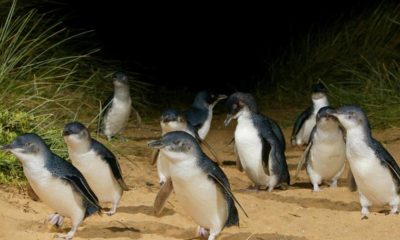












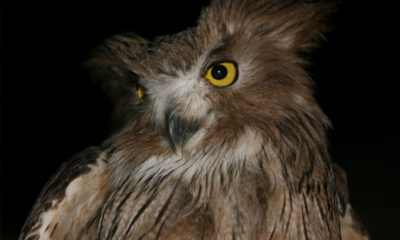

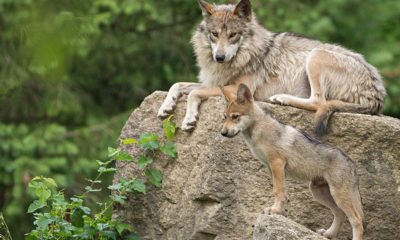

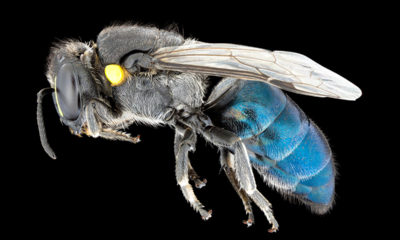

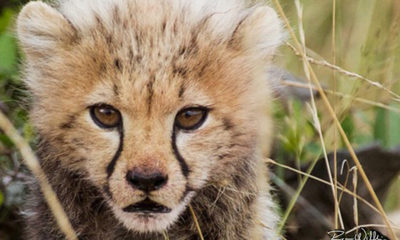

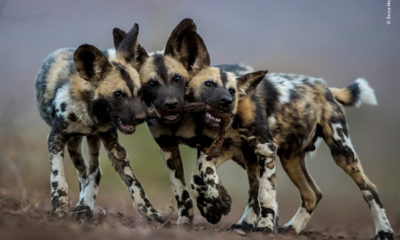

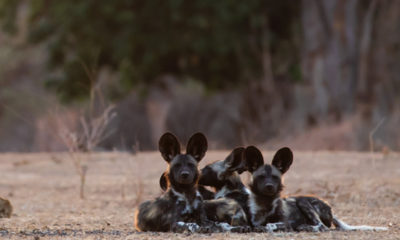




You must be logged in to post a comment Login